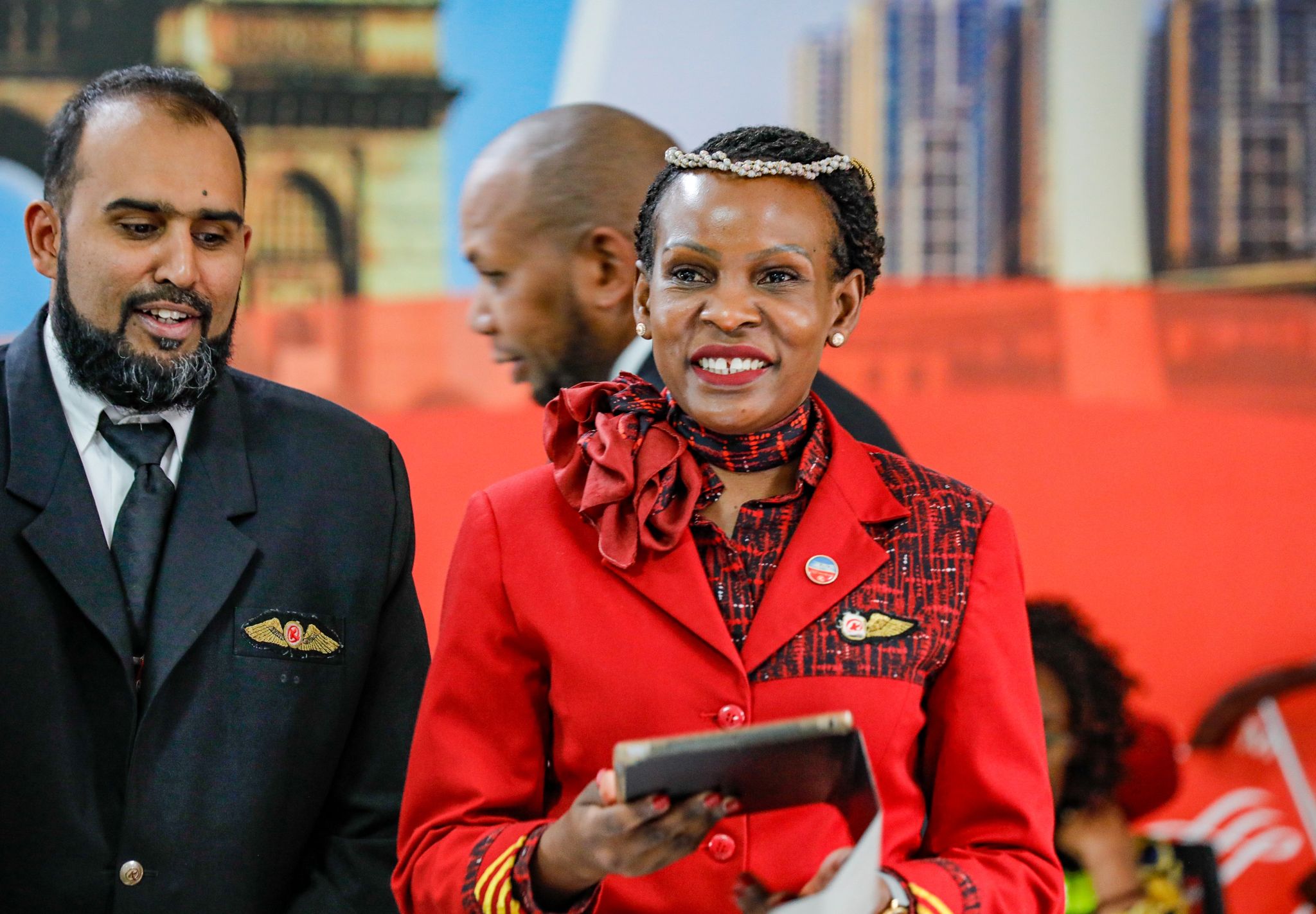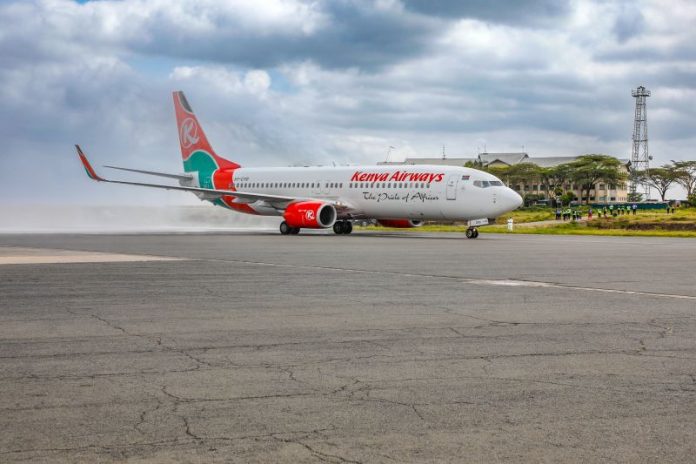Kenya Airways has operated its first intra-African flight using Sustainable Aviation Fuel (SAF), a milestone that places the national carrier among the continent’s early adopters of renewable jet fuel technology. The Nairobi–Cape Town flight, completed under the SkyTeam Aviation Challenge 2025, used a 50 per cent blend of SAF attributes verified through global certification schemes. It marks a significant move by the airline to reduce its carbon footprint and aligns with international efforts to achieve net zero emissions in aviation by 2050.

Sustainable Aviation Fuel is derived from renewable sources such as used cooking oil, agricultural residues, and captured carbon combined with green hydrogen. When produced through Hydro-processed Esters and Fatty Acids (HEFA) technology, it can reduce life-cycle greenhouse gas emissions by as much as 85 per cent compared to conventional fossil-based jet fuel.
The flight, operated under a mass balance system, represents not only a technical demonstration but a signal that Africa’s aviation industry is beginning to confront its share of the global climate challenge.
According to industry analysts, aviation accounts for around 2.5 per cent of global carbon emissions but remains one of the hardest sectors to decarbonize. The International Air Transport Association (IATA) projects that Sustainable Aviation Fuel will deliver up to 65 per cent of the total emissions reduction needed for the industry to reach net zero by mid-century. Kenya Airways’ experiment is therefore less about symbolism and more about testing feasibility within the constraints of African energy markets and infrastructure.

The flight carried a blend of optimism and pragmatism. Kenya Airways said the SAF attributes were verified under globally recognized certification frameworks to ensure traceability and transparency.
Onboard, the airline introduced a series of low-waste initiatives, including upcycled blanket bags, reusable cutlery, and locally sourced Kenyan coffee and tea served in reusable cups. Cabin crew also engaged passengers in discussions on responsible travel practices, an approach that turns sustainability from a back-office metric into a visible in-flight experience.
Hellen Mwariri, Kenya Airways’ Chief Strategy and Innovation Officer, described the initiative as evidence of what can be achieved when innovation is paired with collaboration. “This flight shows what can be achieved through partnership and creativity,” she said. “It’s a step towards practical solutions that reduce our impact while keeping operations efficient.”
Behind this optimism lies a set of economic and policy questions. Sustainable Aviation Fuel is still prohibitively expensive, costing between two and four times more than conventional jet fuel. In an industry already constrained by thin profit margins and high operational costs, this price gap poses a serious challenge to adoption.
Analysts note that while airlines in Europe and North America benefit from government incentives and clear blending mandates, African carriers face fragmented policy environments, limited refining capacity and weak investment pipelines for renewable fuel production.
Kenya Airways’ move could, however, catalyze regional interest in domestic production. The airline has confirmed ongoing work with government agencies, local innovators and international partners, including IATA, SkyTeam and the African Airlines Association (AFRAA), to establish a local SAF production plant in Kenya by 2026. If successful, such a facility would position Kenya as an East African hub for low-carbon aviation fuel and potentially lower costs through local supply chains.
The global race toward SAF production capacity underscores this ambition. By 2024, the United States and the European Union had jointly accounted for nearly 90 per cent of global SAF output, thanks to a combination of blending mandates and fiscal incentives. Africa, despite being rich in bio-feedstock such as jatropha, camelina and waste oils, contributes less than 1 per cent.
Establishing local production in Kenya could therefore have multiplier effects: stimulating green manufacturing, supporting circular economy models through waste valorization, and reducing dependence on imported petroleum products that strain foreign exchange reserves.
From a sustainability standpoint, the broader challenge lies in scalability. Even at 50 per cent blending, a full network transition would require millions of litres annually. Kenya Airways alone consumed about 700 million litres of jet fuel before the pandemic, meaning that sustained decarbonisation will depend on both fuel availability and supportive regulation. The Carbon Offsetting and Reduction Scheme for International Aviation (CORSIA), which mandates airlines to offset emissions on international routes, provides a framework but relies heavily on the development of alternative fuels to meet its long-term goals.
The symbolic value of Kenya Airways’ flight extends beyond corporate sustainability. It demonstrates how African airlines can use sustainability as a competitive asset, attracting environmentally conscious travellers and international partners. It also aligns with Kenya’s national climate agenda, which targets a 32 per cent emissions reduction by 2030 and a long-term goal of net zero by 2050. In a continent where aviation supports millions of jobs, from tourism and horticulture to logistics, decarbonizing flight operations is both an environmental and economic imperative.

Practical sustainability will depend on continued collaboration between airlines, refineries, policymakers and financiers. Experts argue that regional alliances, such as between Kenya Airways, Ethiopian Airlines and South African Airways, could generate economies of scale to justify local refining and research investment.
Beyond environmental benefits, the emergence of a regional SAF supply chain could anchor new industries in waste processing, biofuel refining and logistics sectors with clear employment potential.
Read also: Lagos hosts Africa’s first Electric Powerboat Race, steering a shift in the continent’s Blue Economy
Kenya Airways’ milestone is a pragmatic demonstration of what transition can look like when driven by domestic initiative rather than external pressure. The flight does not resolve the cost problem, nor does it eliminate emissions overnight. But it offers a credible test case, one that moves the conversation from ambition to practice, and from pledges to proof.
Engage with us on LinkedIn: Africa Sustainability Matters





